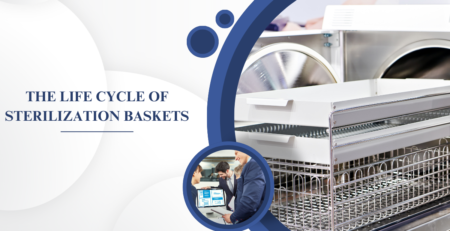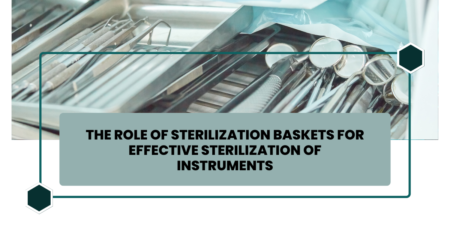
Eye-Opening Facts of the Sterile Processing Industry
admin2023-12-16T12:08:21+00:00The Sterile Processing Industry, often overlooked in the healthcare sector, plays a critical role in ensuring patient safety and the effectiveness of medical procedures. Sterile processing professionals are responsible for the cleaning, sterilization, and maintenance of surgical instruments and medical equipment. While it may not be as glamorous as patient care, this industry is indispensable to the healthcare system. In this article, we’ll explore some eye-opening facts about the Sterile Processing Industry and shed light on its importance.
Patient Safety
Patient safety is the paramount concern of the Sterile Processing Industry. The proper cleaning, sterilization, and assembly of surgical instruments are essential in preventing healthcare-associated infections (HAIs). HAIs can have severe consequences for patients, including prolonged hospital stays, increased healthcare costs, and in some cases, even death.
Complex Process
Sterile processing is a highly complex and regulated field. It involves multiple steps, from the collection of dirty instruments to their decontamination, inspection, assembly, and sterilization. Each step requires precision and adherence to strict protocols to ensure that instruments are sterile and safe for use in surgeries and medical procedures.
Regulatory Oversight
To maintain the highest standards of patient safety, the Sterile Processing Industry is subject to rigorous regulatory oversight. Organizations such as the Association for the Advancement of Medical Instrumentation (AAMI) and the Centers for Disease Control and Prevention (CDC) provide guidelines and recommendations that must be followed. Sterile processing departments are regularly inspected to ensure compliance with these standards.
Technological Advancements
Advancements in technology have greatly impacted the Sterile Processing Industry. Automated sterilization equipment, tracking systems, and ultrasonic cleaners have improved efficiency and accuracy in the sterilization process. These innovations have reduced the risk of human error and enhanced patient safety.
Education and Training
Sterile processing professionals undergo extensive education and training to perform their jobs effectively. Many professionals earn certifications, such as the Certified Sterile Processing and Distribution Technician (CSPDT) or Certified Registered Central Service Technician (CRCST), to demonstrate their competence in the field. Continuous learning and staying up-to-date with the latest industry standards are crucial for success in this profession.
High-Stress Environment
Working in the Sterile Processing Industry can be highly stressful. Sterile processing professionals often have tight deadlines to meet, as surgical teams rely on them to have instruments ready for procedures. The pressure to maintain sterility and prevent any contamination is immense, as any mistake can have serious consequences for patients.
Environmental Impact
Sterile processing also has environmental implications. The use of disposable instruments and single-use devices has been a topic of debate within the industry. While these items can reduce the risk of contamination, they also contribute to medical waste. Sterile processing professionals are constantly exploring ways to balance patient safety with environmental concerns.
Global Impact
Sterile processing is not limited to one country or region; it is a global concern. Healthcare facilities worldwide rely on the expertise of sterile processing professionals to ensure the safety of their patients. The exchange of best practices and international collaboration is essential for maintaining high standards in the industry.
Diversity in the Workforce
The Sterile Processing Industry welcomes individuals from diverse backgrounds. It is a field where people of various ages, genders, and ethnicities come together to ensure patient safety. This diversity enriches the industry and fosters a collaborative work environment.
Research and Innovation
The Sterile Processing Industry is not stagnant. Researchers and professionals are constantly looking for ways to improve sterilization techniques, develop new materials, and enhance the safety of medical devices. These advancements benefit patients and contribute to the overall progress of healthcare.
Economic Impact
The Sterile Processing Industry has a significant economic impact. It supports a multitude of jobs, from technicians to manufacturers of sterilization equipment and packaging materials. Moreover, it contributes to cost savings in healthcare by reducing the incidence of HAIs and preventing the need for costly treatments.
Challenges and Vulnerabilities
Despite its critical role, the Sterile Processing Industry faces challenges and vulnerabilities. Staffing shortages, inadequate training, and budget constraints can hinder the ability of sterile processing departments to maintain high standards consistently. Recognizing and addressing these challenges is essential for the industry’s long-term success.
Conclusion
The Sterile Processing Industry is an essential part of the healthcare ecosystem, safeguarding patient safety through the meticulous cleaning, sterilization, and maintenance of medical instruments and equipment. Sterile processing professionals are the hidden heroes working diligently behind the scenes, ensuring that surgeries and medical procedures can be performed with the utmost confidence.
From regulatory oversight to technological advancements and the impact of global pandemics, the Sterile Processing Industry is continually evolving. It is a field that demands precision, dedication, and a commitment to excellence. The professionals in this industry play a pivotal role in healthcare, and their work is crucial to saving lives and preventing infections.




Leave a Reply